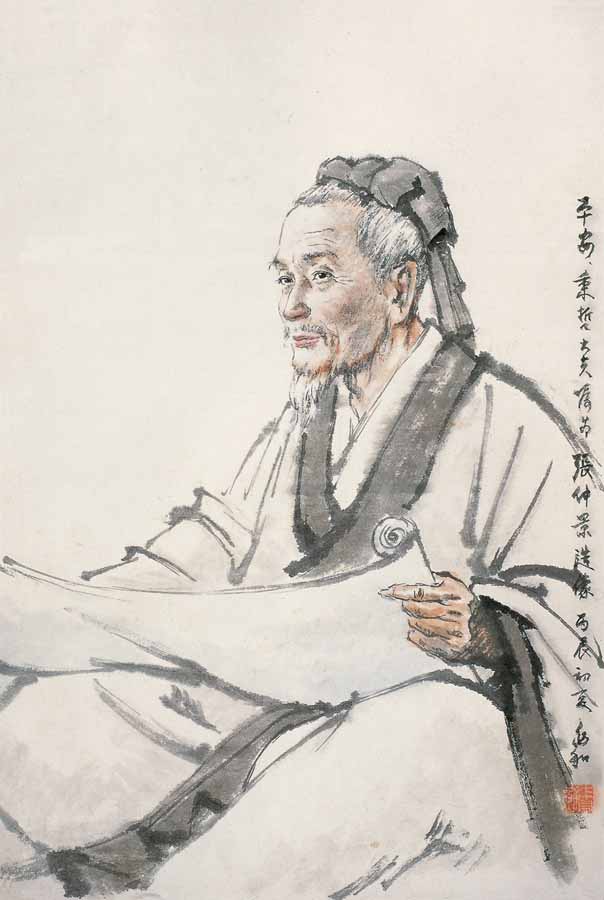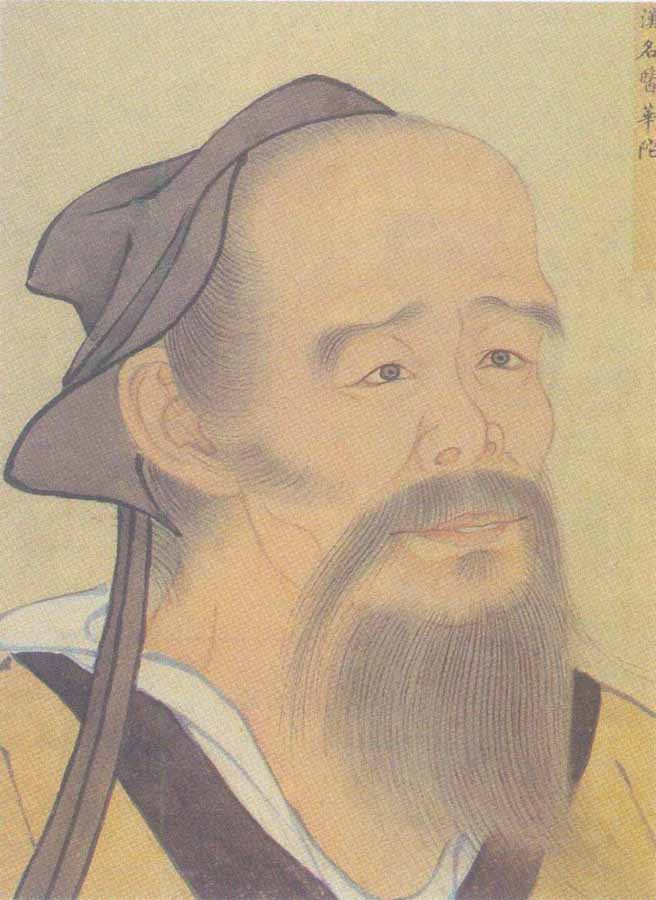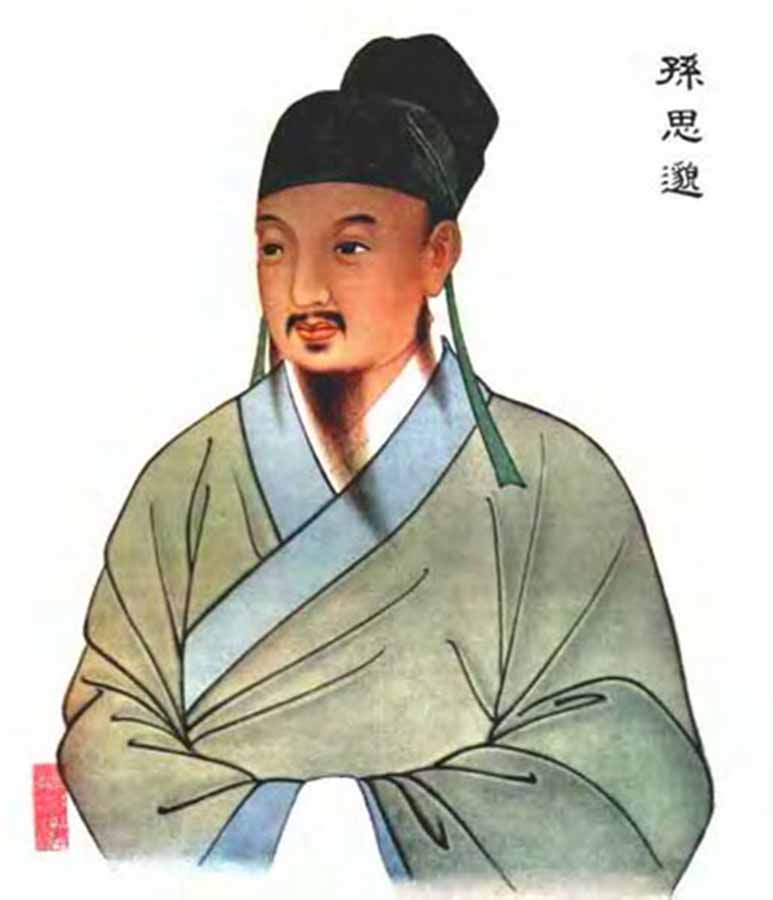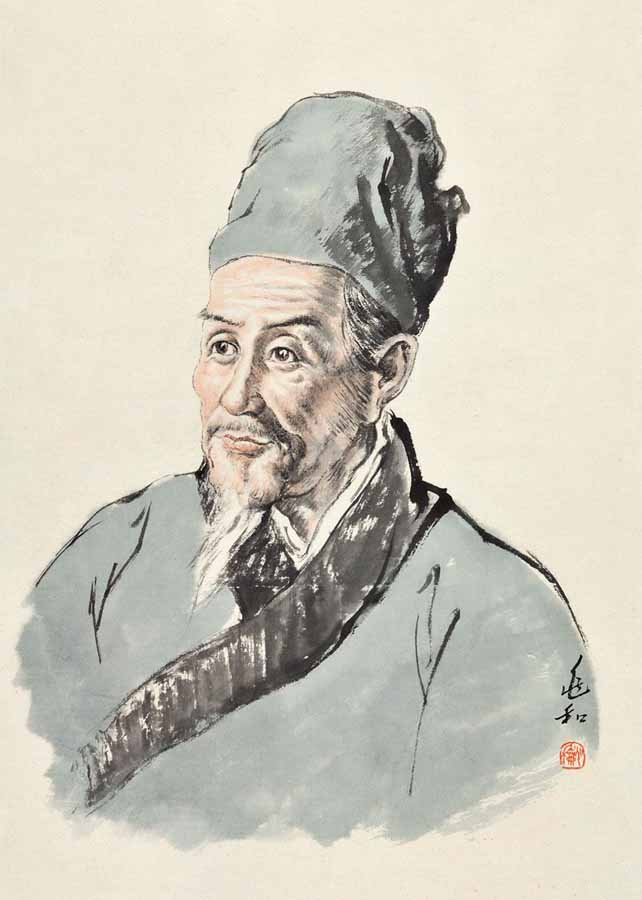In China’s long history, there were so many well-known doctors of TCM. Due to their outstanding contribution to this field, Chinese medical theory has been developed very well and is still cherished today. Let us check out the most famous TCM physicians in ancient China and extend our salute to them.
Zhang Zhongjing张仲景

Zhang Zhongjing(150 – 219 AD), commonly known as Zhang Ji, was a famous physician from the Eastern Han Dynasty. He was known for his book Shang Han Za Bing Lun(《伤寒杂病论》Treatise on Cold Pathogenic and Miscellaneous Disease), which was the most influential and impactful medical book in the development of Chinese medicine. It was also the first monumental work on clinical medical treatment in China. This book effectively developed and established the theoretical framework for Chinese medical diagnoses and treatment. His book is highly regarded by doctors of all ages, and he is admired as the Saint of Medicine.
Zhang Zhongjing was born in Nanyang, Henan Province. His hometown was one of the four cities of medicine in China. While still a young man, Zhang Zhongjing took a special interest in medicine. In his time, many people were infected with febrile disease, as was his own family. He learned medicine by studying from Zhang Bozu, a fellow townsman, from other carefully-studied medicinal texts, and by accumulating prescriptions from around China.
When Zhang Zhongjing was a prefect of Changsha, disease prevailed in the country. As medicine was not very developed then, many people, especially the poor, turned to witchcraft when they were sick, only turned out to be cheated. Zhang Zhongjing was truly upset with what he observed. He hated the shamans, who brought death upon people for money.
Once he saw a woman suffering because of her illness. She was crying and laughing, obviously under some form of stimulation. Zhang Zhongjing took a closer look at the patient and pointed out that she was in fact suffering from internal heat in her blood chamber, which could be cured. He applied acupuncture to the patient, who healed after a few days.
One day, while Zhang Zhongjing was working as a physician, he saw a group of people gathered in front of a house. He went forward to examine the situation. A man was lying on the floor with a few women crying next to him. Zhang Zhongjing was told that the man had hanged himself because he was too poor to continue living. Zhang kept the man warm by covering him with a blanket. Then he asked two men to press on the man’s chest. Zhang Zhongjing then exerted pressure with his palms on the man’s chest. Zhang Zhongjing then exerted pressure with his palms on the man’s abdomen and waist a few times. After a while, the man came around.
Zhang’s masterpiece, Shang Han Za Bing Lun, was collected and organized later by physicians, notably Wang Shuhe from the Jin Dynasty and various court physicians during the Song Dynasty into two books, namely for the former, Shanghan Lun(《伤寒论》Treatise on Cold Pathogenic Diseases), which was mainly on a discourse on how to treat epidemic infectious diseases causing fevers prevalent during his era, and the latter, a highly influential doctrine Jin Gui Yao Lue(《金匮要略》Synopsis of Golden Chamber), a compendium of various clinical experiences which was regarded as a main discourse on internal diseases. These two texts have been heavily reconstructed several times up to the modern era.
Hua Tuo华佗

Hua Tuo was an ancient Chinese physician who lived during the late Han Dynasty and the Three Kingdoms era. He was born in Haozhou, Anhui. Bozhou(亳州) is one of the four cities of medicine in China.
Hua Tuo was born into a poor family. When he was seven years old, his father passed away, taking with him the only source of family income. Faced with financial hardship and poverty, Hua Tuo began to work in a local herbal pharmacy. While working there, he carefully observed the practice of medicine and pharmacy. Thus began his career as one of the best physicians.
Hua Tuo practiced medicine during the end of the Eastern Han and the beginning of the Three Kingdoms, a period of time characterized by political instability with constant battles and turmoil. He sympathized with the common people whose lives were suppressed by the government and dedicated his entire life to helping them. Therefore, he was also known as”the physician of the people”.He preferred to treat the common folks and repeatedly refused to accept offers of the position as the Supreme Physician in the Imperial Palace.
Hua Tuo is respected for being the first surgeon and inventor of Mafeisan(Numbing and Boiling Powder), an herbal formula used to stop patients from feeling pain during surgery in TCM. He believed that for diseases that could not be treated with acupuncture and herbs, the only solution was surgery to remove the cause. It is well-documented that Hua Tuo frequently performed surgery on various parts of the body by using Mafeisan for systemic anesthesia.
Despite his outstanding achievements, there were always more patients than Hua Tuo could possibly care for in his practice. Thus, he began to wonder why people were always sick and what would make them healthier. He believed that chronic illnesses were due, in part, to a lack of physical activity and proposed regular exercise as a remedy. As part of Hua Tuo’s strong emphasis on the importance of physical activity, he developed Wuqinxi五禽戏(Five Animal Frolics), an exercise that imitates the physical movement of tigers, deer, apes, bears and cranes.
Of the stories told of Hua Tuo, one legend is that General Guan Yu, one of the great military heroes of the time who eventually became the God of War, came to Hua Tuo because of an arrow wound in his arm that had become badly infected. The surgeon prepared to give his patient the usual anesthetic drink, but General Guan Yu laughed scornfully and called for a board and stones for a game of go. While Hua Tuo scraped the flesh and bone free of infection and repaired the wound, Guan Yu and one of his military companions proceeded calmly with their game.
In his later years, Hua Tuo was called by the emperor of the Wei Kingdom, Cao Cao, to treat his”headwind”(presumably migraine headache)that had not responded to any of the treatments by many other physicians. With the insertion of just one needle, the chronic headache was alleviated. Cao was so impressed that he insisted on having Hua Tuo as his personal physician. However, Hua Tuo tactfully refused, claiming he needed to return home to attend to his sick wife.
Shortly after returning home, he was called again and subsequently forced by Cao to return to the Imperial Palace. Cao had another severe headache and wanted Hua Tuo to cure him and would not let him leave the Imperial Palace. Hua Tuo stated the headache was so severe that it could not be treated simply with herbs or acupuncture. The only cure would be to induce anesthesia and surgically open the head to remove the cause of the headache. Cao thought Hua Tuo was making an attempt to assassinate him and sentenced Hua Tuo to death.
While in prison, Hua Tuo compiled all of his clinical experience in writing and tried to give it to a prison guard for safekeeping. However, out of fear of Cao, the guard refused to do any favors or accept anything from Hua Tuo. In extreme anger and frustration, Hua Tuo burned his manuscripts, turning all his clinical knowledge to ashes. After Hua Tuo died, he was buried next to a flowing river of clear water-symbolizing he was cleared from all wrong-doing.
Sun Simiao孙思邈

Sun Simiao(581 – 682 AD)was the greatest doctor in the Tang Dynasty. When he was young, Sun Simiao was very intelligent but frequently suffered from diseases. He was well educated and read books from various schools, including medicine. Two emperors of the Tang dynasty invited him to work in the Imperial Court, but he refused to accept. All through his life, he lived in the mountains, practicing and studying medicine. He lived for over one hundred years and was worshiped as the King of Medicine.
Sun Simiao wrote two books, Qian Jin Yao Fang(《千金要方》Golden Prescriptions) and Qian Jin Yi Fang(《千金翼方》Supplement to Golden Prescriptions), thirty volumes each. These two books contained 6,500 prescriptions and covered the aspects of life cultivation, acupuncture, moxibustion, medicines, and other related fields. So Qian Jin Yao Fang was both a comprehensive book of medicine and an encyclopedia of medicine.
Qian Jin Yao Fang was different from other medical books in the content arrangement. For instance, he put the part about the prevention and treatment of women’s diseases during pregnancy and nursing of the newborn at the beginning of the first volume. Such an arrangement may indicate that Sun Simiao respected women or advocated the concept of protecting and caring for life from birth.
Besides, Sun Simiao also discussed extensively that doctors should cultivate their minds. He said a doctor should be well-learned and hard-working; regard patients as his relatives, avoid being self-proud and never slander other doctors. He wrote an article about the morality of doctors known as Da Yi Jing Cheng(《大医精诚》On the Absolute Sincerity of Great Physicians) which was so great and important that it was often called “the Chinese Hippocratic Oath”.
Sun Simiao died in 682 AD. He is treated respectfully by later generations. People built temples, carved statues and built up a public image for him. His books are widely printed and spread overseas, becoming important TCM works.
Li Shizhen李时珍

Li Shizhen(1518—1593)was a famous medical scholar who has sort of the same stature as Leonardo da Vinci in the West. He was born in Hubei in 1518 at a time of relative prosperity in the middle of the Ming dynasty.
He is mainly known for laboring for most of his life on medical treatises and for publishing a very long encyclopedia of natural medicine called Ben Cao Gang Mu(《本草纲目》Compendium of Materia Medica). The text is highly detailed and organized and is the product of decades of study of rare books and medical texts. He added his own understanding derived from his own medical practice and his family’s medical lore. He went on journeys for research and to interview practitioners.
Both Li Shizhen’s father and grandfather were doctors, and he grew up helping his father in his practice. Li’s grandfather was a wondering country doctor who went around with a bag of herbs and medications and healed people. His father was a doctor and a scholar who had written several books. He wanted his son to enter the government by passing the Imperial Examination. Li studied for the exams and passed the country-level examination, but he could never pass the Imperial Examination.
When he was 27, he cured the son of a prince and was invited to be a doctor and official in that court. A few years later, he became an official at the Imperial Medical Institute in Beijing. During the years he spent there, he had access to rare and old medical texts. He also found that the available medical texts had inaccuracies and contradicted each other and that the medical knowledge of his time was not well defined. He wanted to compile correct information in a logical system of organization.
He wanted to survey all the available knowledge of his time and write the most accurate natural medical text ever written. He thought that the medical texts that were generally available were inaccurate and even had dangerous misinformation. He is thought of as a man who dedicated his life to his works.
To research for his book, he traveled extensively and gained first-hand experience with many herbs and regional folk remedies, and he consulted hundreds of books. He worked on the text for decades and tried to have it published both by a private printer and by the court.
His book was made so finely detailed and listed so many different herbs, medicinal minerals and medicinal animal parts that it was too big and heavy to be used by traveling doctors. The text was divided into many volumes. In his drive for accuracy and completeness, a lot of material is not useful for average practitioners, though it is useful for scholarly reference. It includes material on his understanding of geology, physics and other topics. It is also useful because he included a very long list of references. Ben Cao Gang Mu is considered the greatest scientific achievement of the Ming Dynasty.

